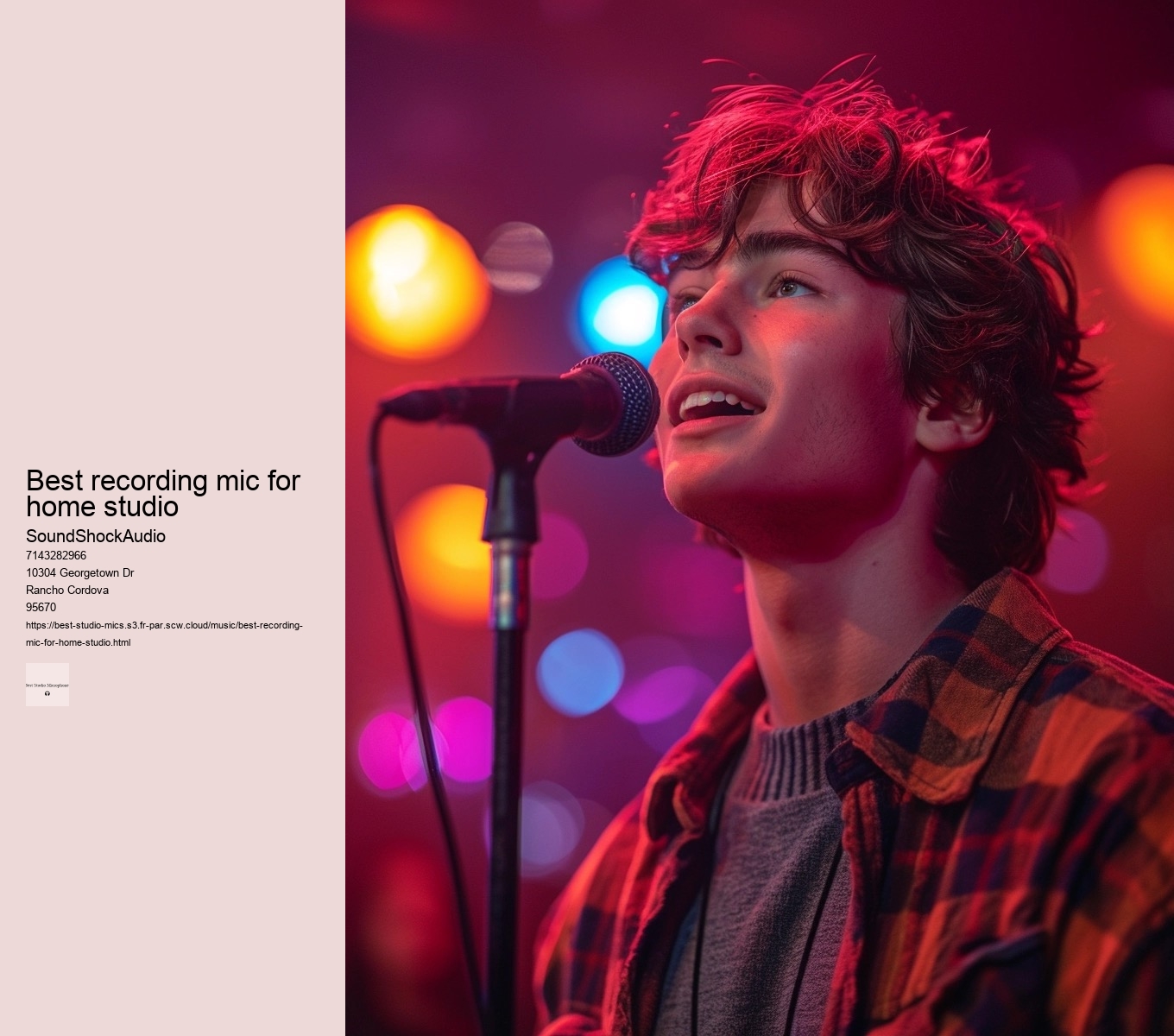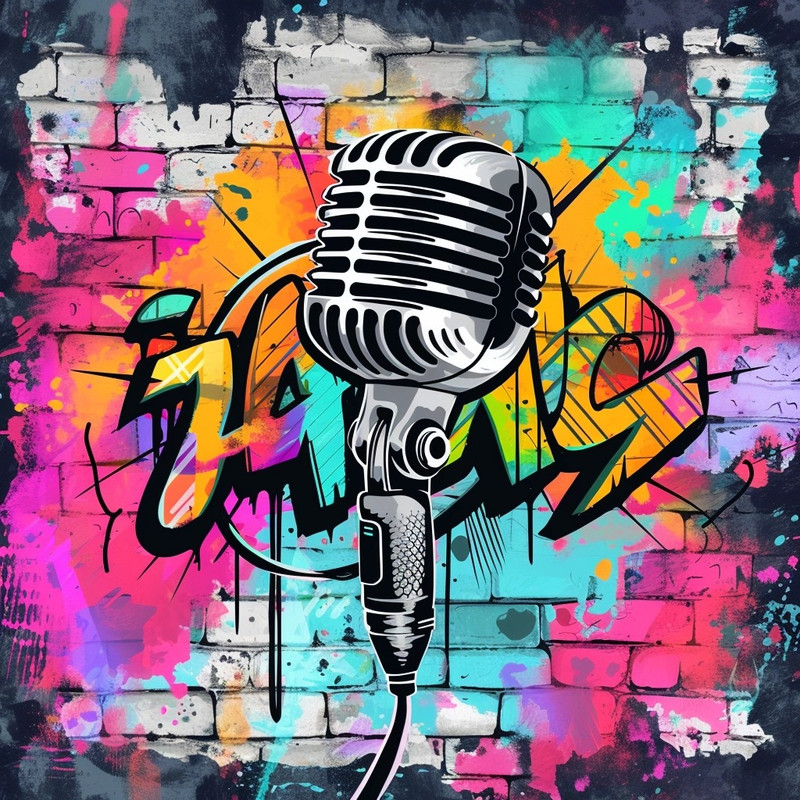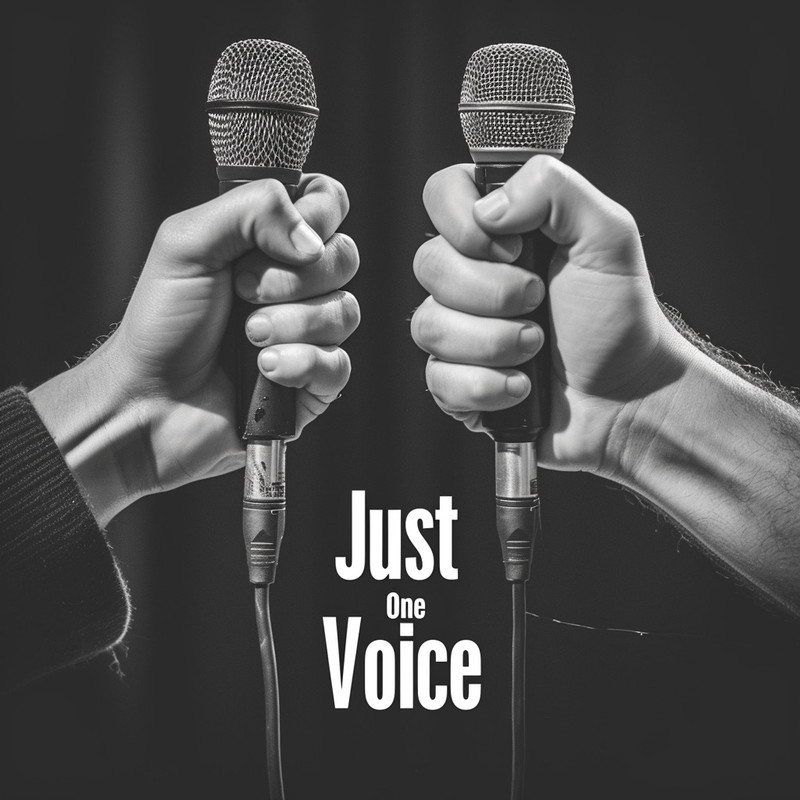

Shure has created an online guide on the best microphones to use for home recordings. To reach professional heights in recording quality, one must consider this trinity of audio components. Since the 1960s, this legend has been delivering the same warm and organic sound.
We've selected microphones that fit a range of budgets and abilities. Picture two performers facing each other over such a mic—a duet ensues where each note is caught in this bidirectional dance but stray echoes from beyond this intimate axis falter and fade away. To find out which microphone to buy, check out the best studio microphones on SoundShockAudio..
Another key feature is the frequency response range that a microphone offers. Just as an exquisite instrument brings out the best in a musician's skillset; so too does an exceptional microphone capture every detail of sonic brilliance waiting to be unleashed upon eager ears worldwide.- Encouragement to experiment with techniques and gear to find the perfect sound setupWhen venturing into the intricate world of audio recording, one might be inclined to believe that a singular, static setup is the key to achieving studio-quality sound.
They integrate effortlessly with computers, negating the need for external audio interfaces or complicated setups. They are sensitive to sounds directed towards the microphone and more effective at reducing unwanted background noises coming from the side or behind than cardioid and supercardioid.
Imagine capturing every nuance of a vocalist's performance—the subtle breaths, the softest whispers—with such fidelity that listeners feel enveloped in the experience. They are a must for any professional studio. They are perfect for situations where you want to record two sources simultaneously or take advantage of the microphone's null points to reject side noises intentionally.
Preamplifiers act like acoustic amplifiers, taking those faint breaths and transforming them into powerful sonic waves capable of filling any space or recording medium without losing fidelity or introducing unwanted noise. This guide aims to provide readers with essential insights into selecting premier microphones that ensure flawless recordings.
Aston Origin is a fixed pattern (cardioid) condenser and the smaller of Aston's two mics. As we will explain, not all microphones are the same.
AKG, like Sennheiser, has managed to release a classic as well as a modern reimagining of the most popular dynamic drum microphone of all time. For rich vocals or narration, snuggling up close with a cardioid pattern mic can bring warmth and presence.
Choosing an entry-level microphone doesn't mean compromising on versatility either. At its core, a preamplifier's mission seems straightforward: boost microscopic whispers captured by microphones into robust torrents that recording equipment can handle with grace. This versatility makes it suitable for everything from intimate vocal sessions to room-filling orchestral recordings; however, its sensitivity might not be ideal in exceedingly loud environments.
You'll need a lot of gain for the SM7B to produce that legendary sound. Thirdly, use rugs or carpets along with heavy curtains on windows not only to prevent external noises from entering the room but also to dampen internal reflections of sound off hard surfaces like floors and glass panes.
Condenser mics are preferred by most studio professionals for recording vocals. You'll also need a microphone that can record the performance.
Shure SM57's ability to withstand high volumes without breaking a perspiration earns it a spot on this list. Lastly, headphones serve as both scout and guardian in this realm—a means to intimately monitor and critique sounds as they come to life while keeping external noise at bay.


An omnidirectional mic offers equal sensitivity all around; thus, it’s less about angling and more about centering it within an acoustically balanced environment. In live settings where ambiance and audience reactions are part of the desired capture, omnidirectional or bidirectional microphones might be summoned for their panoramic audio embrace. In contrast, professional studios boast meticulously designed spaces equipped with high-end gear tailored for optimal sound capture.
Knowledgeable use of these varied tools enables creators to achieve professional-grade recordings that truly resonate with listeners.- Discussion of polar patterns (cardioid, omnidirectional, figure-8) and their impact on sound captureWhen embarking on the quest to capture studio-quality sound, it's essential to understand the role that microphone polar patterns play in shaping the audio experience. To truly uncover studio-quality sound, it is not enough to simply possess a great microphone; one must also understand and appreciate the pivotal role of preamplifiers in sculpting audio into its most pristine form.- The significance of audio interfaces in converting analog signals into digital formatIn the quest to capture studio-quality sound, microphones play a starring role, yet the unsung hero in this sonic journey is often the audio interface.
They strip away unnecessary features to focus on what truly matters: pure and uncolored audio reproduction. It also comes with a shock mount designed to eliminate electronic noise.
This mic will allow you to record detailed recordings without worrying about background noises or electrical hum. dynamic microphone Riverside's Remote Audio Recording Software allows you to record high-quality audio.
Many models are adept at handling various recording scenarios from vocals and acoustic guitars to percussion and ambient room sounds. Bass traps tackle low-frequency buildups that often occur in corners where walls meet. This is for you if you feel your voice sounds harsher on other microphones or if you want that classic sound.
The best studio microphone—one that hoists your recordings to professional heights—is contingent on your needs. Certain microphones have been used to record massive hits for the past century and still today.
Whether it's traditional XLR cables favored by professionals for their balanced signals and robust connection or USB interfaces that cater to home studios with their plug-and-play convenience—having the right connectors means seamless integration with existing equipment. Conversely, when nestled in a professional studio sanctuary bathed in acoustic treatments and soundproofing paradises, one has the luxury to flirt with more sensitive and nuanced microphones like large-diaphragm condensers. Experience
Here lies a pivotal aspect: pickup patterns—each with its distinct sonic footprint, shaping the outcome of a recording in profound ways. In summary, while deliberately seeking out the least probable options can be an interesting exercise in creativity or contrarian thinking—it's antithetical when aiming to uncover top microphones capable of delivering studio-quality recordings without compromise.

Although you can record vocals using any microphone, cardioid condenser mics are the best for vocal recordings due to their design. Understanding the directional characteristics — or polar patterns — of each microphone type further refines recording techniques. The 121, along with another mic in this list is the definitive guitar-cabinet microphone of the past 20 years.
The sound is full and clear, and much more linear than dynamic mics. Don't shy away from unconventional techniques either; sometimes placing a microphone off-axis or at varying distances can yield surprisingly impressive outcomes.
They have regained popularity among audiophiles who crave that classic vibe from their recordings—perfect for capturing nuances in vocals and acoustic instruments. The stainless steel case has two switches: a 10dB pad, and an 80Hz low-cut.
Acoustic treatment complements isolation by refining the recording space itself. Ultimately, selecting a studio microphone requires balancing personal aspirations against fiscal realities; yet it remains clear that options exist for elevating recordings without necessitating exorbitant expenditure.
This sensitivity requires them to utilize phantom power but also allows them to pick up every intricate detail of vocals or acoustic instruments—a must-have feature for any serious recording endeavor. The Audio-Technica AT2020 is one such example; it provides a solid performance at a fraction of the cost of high-end microphones—a boon for emerging artists who do not wish to compromise on sound fidelity. The D112's increased midrange presence makes it a great match for external kickdrum condensers such as the FET-style mics 47.
These are particularly beneficial for podcasters or home studio enthusiasts who may not have access to sophisticated recording gear but still wish to produce high-quality content. vocal microphone Instrumentalists demand precision in capturing the unique timbres of their instruments.
This is crucial because it determines whether you require a USB microphone or an XLR microphone. Now consider each piece of acoustic foam or bass trap as a stroke of paint enhancing the overall picture.
First on our list is the Shure SM7B—a dynamic microphone revered by podcasters and vocalists alike. Even when used close to the source, the RE20 still sounds natural.
Michael Jackson famously used the Shure SM7 microphone for recording his iconic album "Thriller." This microphone is renowned for its ability to capture a wide range of vocals with great clarity and warmth, making it a favorite among many artists and producers.
Elton John has been seen using various microphones throughout his career, but he is often associated with the Shure SM58 for live performances. This microphone is renowned for its durability, sound quality, and ability to handle the powerful vocals of artists like Elton John. However, for studio recordings, the specific microphones used can vary depending on the production requirements and preferences at the time.
Justin Bieber, like many professional artists, often uses high-quality microphones tailored for live performances. A popular choice among such artists, including Bieber, is the Shure SM58, known for its durability and ability to deliver clear, quality sound in live settings. However, the specific microphone he uses can vary depending on the venue, sound requirements, and personal preference at the time.
Christina Aguilera has been seen using various microphones throughout her career, but she is often associated with high-quality, professional-grade microphones for both studio recordings and live performances. One of the microphones she has been known to use is the Shure SM58, a popular choice among vocalists for its reliability and sound quality. However, for studio recordings, she might opt for more high-end models to capture the nuances of her voice.
In professional audio, condenser microphones and dynamic microphones are commonly used. Condenser microphones are favored for their sensitivity and wide frequency response, making them ideal for studio recording and capturing vocals and acoustic instruments. Dynamic microphones, on the other hand, are known for their durability and ability to handle high sound pressure levels, making them suitable for live performances and recording louder sources like drums and electric guitars.
Carrie Underwood, like many professional singers, has used various microphones throughout her career. However, she has often been seen using the Shure Beta 58A, a high-output supercardioid dynamic vocal microphone, during live performances. This microphone is favored by many artists for its reliability, sound quality, and ability to handle high sound pressure levels.